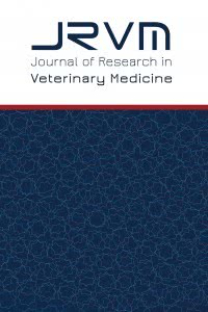BOŞLUK ORANININ GÖRÜNTÜ İŞLEME YARDIMIYLA BULUNMASI
Görüntü işleme, İki fazlı akış, Boşluk oranı
Determination of Void Fraction by Image Processing
Image processing, Two-phase flow, Void fraction,
___
- Armand A.A. and Treschev, G.G. (1946) The Resistance During the Movement of a Two-phase System in Horizontal Pipes, IzvestiaVse Teplotekh. Inst.,1, 16–23.
- Baroczy C.J., (1965) Correlation of liquid fraction in two-phase flow with application to liquid metals, Chemical Engineering Progress Symposium Series, 61 (57), 179–191.
- Bowers, C. D. and Hrnjak, P. S. (2010) Determination of Void Fraction in Separated Two-Phase Flows Using Optical Techniques, International Refrigeration and Air Conditioning Conference, Paper 1083. http://docs.lib.purdue.edu/iracc/1083
- Cavallini, A., El-Hajal, J. and Thome, J. R. (2003) Condensation in horizontal tubes, part 1: two-phase flow pattern, part 2: new heat transfer model based on flow regimes, International Journal of Heat and Mass Transfer, 46, 3349-3363. doi:10.1016/S0017-9310(03)00139-X, doi:10.1016/S0017-9310(03)00140-6
- El-Hajal J. and Fauske H. (1961) Critical two-phase, steam-water flows, Proceedings of the Heat Transfer and Fluid Mechanics Institute, Stanford University Press, Stanford, CA, 79–89.
- Godbole, P. V., Tang, C. C. and Ghajar, A. J. (2011) Comparison of Void Fraction Correlations for Different Flow Patterns in Upward Vertical Two-Phase Flow, Heat Transfer Engineering, 32, 843-860. doi:10.1080/01457632.2011.548285
- Hibiki, T. and Mishima, K. (1996) Feasibility of high frame-rate neutron radiography by using a steady thermal neutron beam with 106 n/(cm2 s) flux, Nuclear Instruments and Methods in Physics Research, A369, 186-194. doi:10.1016/0168-9002(95)00795-4
- Hibiki, T., Mishima, K. and Nishihara, H. (1997) Measurement of radial void fraction distribution of two-phase flow in a metallic round tube using neutrons as microscopic probes, Nuclear Instruments and Methods in Physics Research, A399, 432-438. doi:10.1016/S0168-9002(97)00941-8
- Kariyasaki, A., Fukano, T., Ousaka, A. and Kagawa, M. (1991) Characteristics of time-varying void fraction in isothermal air-water concurrent flow in a horizontal capillary tube, Trans. JSME, 57, 4036-4043
- Kawahara A., Kawaji, M., Chung, P.M.Y., Sadatomi, M. and Okayama K. (2005) Effects of channel diameter and liquid properties on void fraction in adiabatic two-phase flow through microchannels, Heat Transfer Engineering, 26, 13–19. doi:10.1080/01457630590907158
- Koyama S., Lee, J. and Yonemoto, R. (2004) An investigation on void fraction of vapor-liquid two-phase flow for smooth and microfin tubes with R134a at adiabatic condition, International Journal of Multiphase Flow, 30, 291-310. doi:10.1016/j.ijmultiphaseflow.2003.10.009
- Lockhart, R.W. and Martinelli R.C. (1949) Proposed correlation of data for isothermal twophase, two-component flow in pipes, Chemical Engineering Progress, 45, 39–48. http://www.ripublication.com/ijaer17/ijaerv12n7_23.pdf
- Mishima, K. and Hibiki, T. (1996), Some characteristics of air-water two-phase flow in small diameter vertical tubes, Int. J. of Multiphase Flow, 22, 701-703. doi:10.1016/0301-9322(96)00010-9
- Mishima, K., Hibiki, T. and Nishihara, H. (1997) Visualization and measurement of two-phase flow by using neutron radiography, Nuclear Engineering and Design, 175, 25-35. doi:10.1016/S0029-5493(97)00159-3
- Premoli, A., Francesco, D. and Prima, A. (1971) An empirical correlation for evaluating twophase mixture density under adiabatic conditions, European Two-Phase Flow Group Meeting, Milan, Italy.
- Saisorn, S. and Wongwises, S. (2009) An experimental investigation of two-phase air–water flow through a horizontal circular micro-channel, Experimental Thermal and Fluid Science, 33, 306-315. doi:10.1016/j.expthermflusci.2008.09.009
- Smith S. J., Shao L. and Riffat S. B. (2001) Pressure drop of HFC refrigerants inside evaporator and condenser coils as determined by CFD, Applied Energy, 70, 169-178. doi:10.1016/S0306-2619(01)00022-8
- Tandon T. N., Varma H. K. and Gupta C. P. (1985) A void fraction model for annular two-phase flow, International Journal of Heat Mass Transfer, 28, 191-198. doi:10.1016/0017-9310(85)90021-3
- Thom J.R.S. (1964) Prediction of pressure drop during forced circulation boiling of water, International Journal of Heat and Mass Transfer, 7, 709–724. doi:10.1016/0017-9310(64)90002-X
- Thome J.R (2004-2006) Engineering Data Book III, Wolverine Tube Inc.
- Thome J.R. (2005) Condensation in plain horizontal tubes: Recent advances in modelling of heat transfer to pure fluids and mixtures, Journal of the Braz. Soc. of Mech. Sci.&Eng., 27, 23-30. http://www.scielo.br/pdf/jbsmse/v27n1/25373.pdf
- Thome J.R. (2005) Update on advances in flow pattern based two phase heat transfer models, Experimental Thermal and Fluid Science, 29(3), 341-349. doi:10.1016/j.expthermflusci.2004.05.015
- Thome J.R., Ould Didi, M.B. and Kattan N. (2002) Prediction of two phase pressure gradients of refrigerants in horizontal tubes, International Journal of Refrigeration, 25, 935-947. doi:10.1016/S0140-7007(01)00099-8
- Triplett, K. A., Ghiaasiaan, S.M., Abdel-Khalik, S.I. and Sadowski, D.L. (1999) Gas-liquid two-phase flow in microchannels,Part I: Two-phase flow patterns, International Journal of Multiphase Flow, 25, 377-394. doi:10.1016/S0301-9322(98)00054-8
- Winkler, J., Killion, J. and Srinivas G. (2012) Void fractions for condensing refrigerant flow in small channels. Part II: Void fraction measurement and modeling, International Journal of Refrigeration, 35, 246-262. doi:10.1016/j.ijrefrig.2011.08.012
- Winkler, J., Killion, J., Srinivas G. and Fronk, B. M. (2012) Void fractions for condensing refrigerant flow in small channels: Part I literature review, International Journal of Refrigeration, 35, 219-245. doi:10.1016/j.ijrefrig.2011.09.013
- Yashar, D. A., Newell, T. A. and Chato, J. C. (1998) Experimental investigation of void fraction during horizontal flow in smaller diameter refrigeration applications, ACRC TechnicalReport141.https://www.ideals.illinois.edu/bitstream/handle/2142/11849/TR140.pdf?sequence=2
- Zivi S.M. (1964) Estimation of steady-state steam void-fraction by means of the principle of minimum entropy production, Transactions ASME Journal of Heat Transfer Series C, 86, 247–252. doi:10.1115/1.3687113
- ISSN: 2148-4147
- Yayın Aralığı: 3
- Başlangıç: 2002
- Yayıncı: BURSA ULUDAĞ ÜNİVERSİTESİ > MÜHENDİSLİK FAKÜLTESİ
FATMA ESEN, AHMET EGEMEN SAKIN, Mehmet Ferhat SARİ
Boşluk Oranının Görüntü İşleme Yardımıyla Bulunması
YAPAY ZEKÂ MODELLERİ İLE BETONARME YAPILARA AİT ENERJİ PERFORMANS SINIFLARININ TAHMİNİ
MİKROMEKANİK OLARAK TASARLANMIŞ ÇİMENTO ESASLI KOMPOZİTİN (ECC) KENDİLİĞİNDEN İYİLEŞMESİ
BİYOMEDİKAL UYGULAMALAR İÇİN POLİSAKKARİT ESASLI NANOLİFLİ YÜZEY ÜRETİMİ VE ÇAPRAZ BAĞLANMASI
FTALOSIYANIN İNCE FILMDE EMPEDANS SPEKTROSKOPI VE DIELEKTRIK DURULMA
ANTAKYA’DA MEYDANA GELEN MOTOSİKLET KAZALARININ İNCELENMESİ
DETERMINATION THE NUMBER OF ANTS USED IN ACO ALGORITHM VIA GRILLAGE OPTIMIZATION
